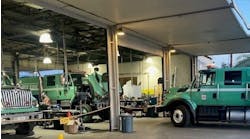The Consumer Price Index (CPI), the most widely followed measure of inflation, has experienced a relentless rise in its rate of change over the past two years—so much so that the subject now dominates discussions of current and prospective economic conditions. Here’s a quick timeline of the past few years:
- February 2020: At the start of the COVID-19 pandemic, the inflation rate stands at 2.3%, a level around which it fluctuates from the previous five years.
- May 2020: As the country endures the lockdowns that disrupt every facet of daily life, the CPI drops to 0.2%.
- March 2021: The economy reopens and the inflation rate climbs higher, reaching 2.6%.
- July 2021: The CPI jumps to 5.3%.
- January 2022: The CPI reaches 7.5%.
- July 2022: Inflation hits 9.1%.
While it has become quite fashionable among the punditocracy to compare the current rate of inflation to the rates of the 1970s and 1980s—with headlines noting the recent CPI is the highest in 40 years—those comparisons are about as valid as saying a heart attack is the same as a broken leg because both patients are in the ICU.
The circumstances that brought about the waves (yes, there was more than one) of double-digit inflation in the 1970s and 1980s are completely different from the circumstances that brought the CPI from 0.2% to 9.1% over the past two years.
So, rather than dwell on the past, let’s focus on the signals we are getting now from several prices that are important to you.
The most important prices are those associated with hauling freight. Why? Because how much maintenance a truck needs depends largely on how much it is used. How much maintenance that truck actually receives depends largely on the ability of the truck user to afford the repair. And both of those elements are reflected in the revenue collected by hauling freight.
According to the U.S. Bureau of Labor Statistics (BLS), truck transportation prices have risen 23.4% over the past year. In May 2020, they had fallen 3.8% from where they had been in 2019. The price measured by the BLS includes all the costs associated with moving the freight, so special handling charges, fuel surcharges, and any other fees are in the BLS number. By the way, these price indexes can be accessed at no charge from the BLS website.
The rebound from -3.8% in May 2020 to +23.4% in June of this year is the result of extraordinary levels of demand, constrained supply, and robust pricing power.
Much of what happens next to freight rates also will depend on what happens to fuel costs. In February 2020, as the COVID event was getting under way, diesel fuel stood at $2.956. By May, the price was down to $2.437 per gallon. In early June of this year, we reached $5.783 per gallon.
Over the next several months, we will be looking at the level and trend of freight rates to see just how much of the tensions that have driven those prices higher over the past two years are unwinding.
On the demand side, we expect to see the seasonal patterns of freight movement begin to reassert themselves. We will be looking most closely at the freight volumes associated with the retail sector where there are reports of inventories still being out of balance. Also of interest will be what happens in the agricultural sector as the crop year progresses.
Recent news from the supply side has employment in truck transportation rising steadily as training, recruitment, and retention programs appear to be having some success.
The pricing dynamic, which has lately favored the truckers, seems likely to revert to a more balanced situation where shippers regain some element of control.
Structural changes are underway in the economy that are affecting every aspect of the trucking industry. The rapid rise in the prices associated with trucking activity are the proof of that. The structural changes are far from complete, so the pricing environment will remain volatile. Our task will be to make the best use of the information being signaled by those prices.




